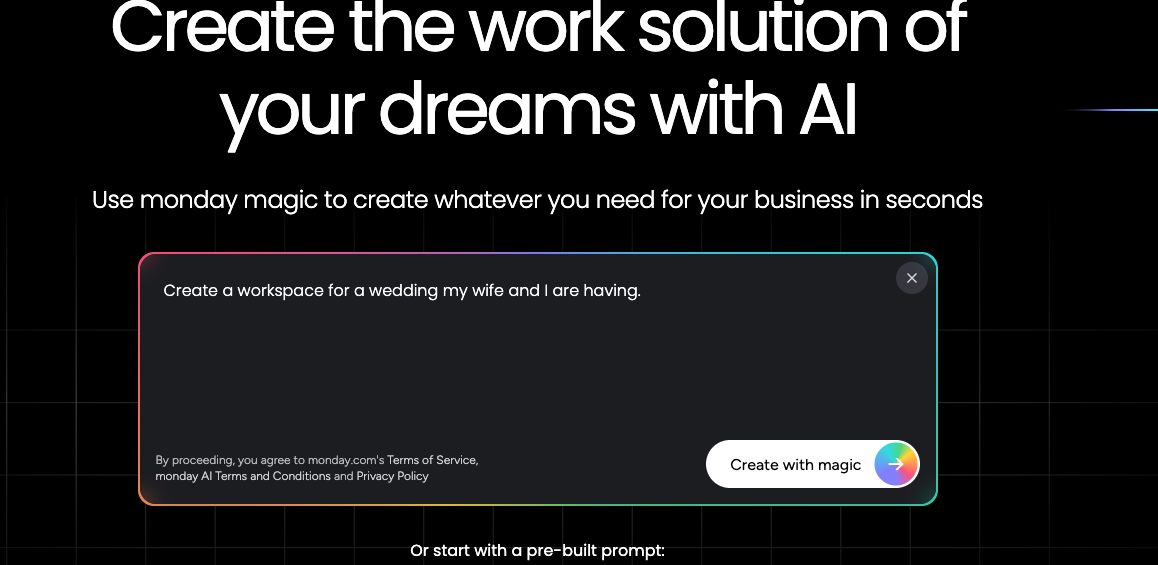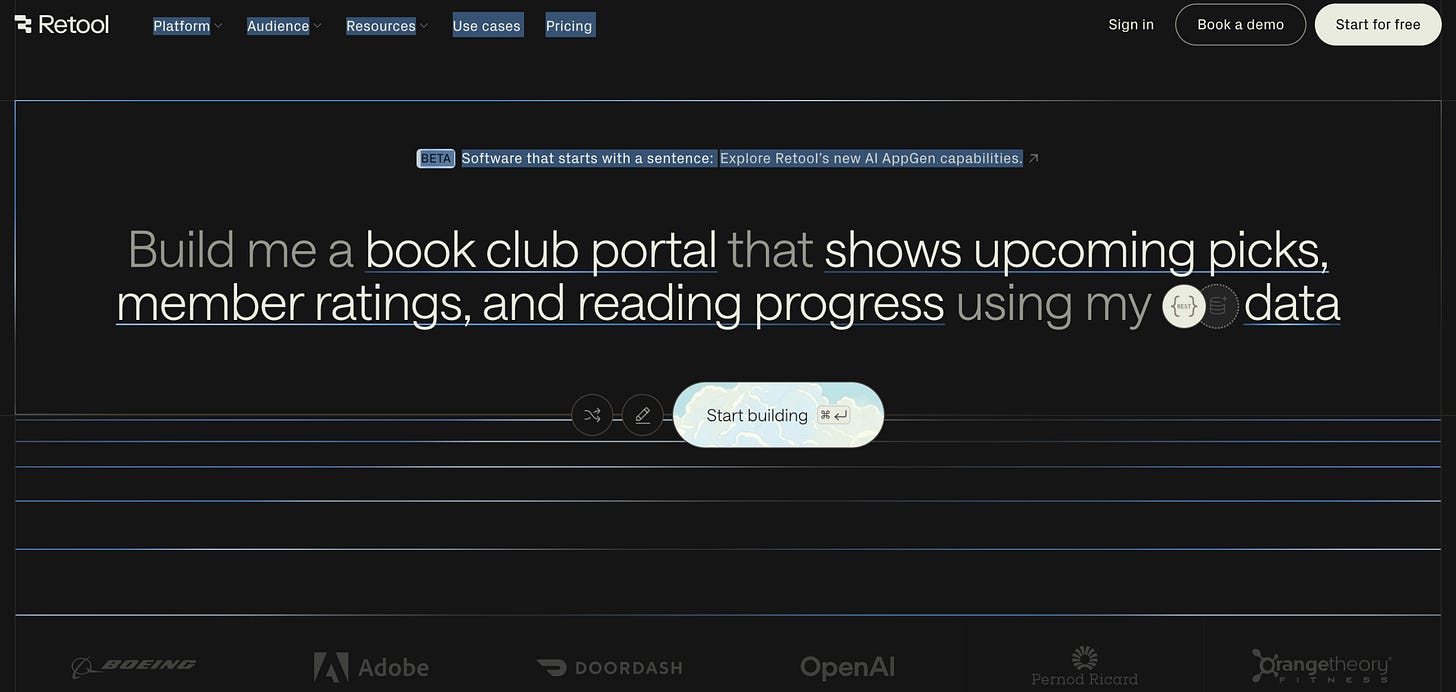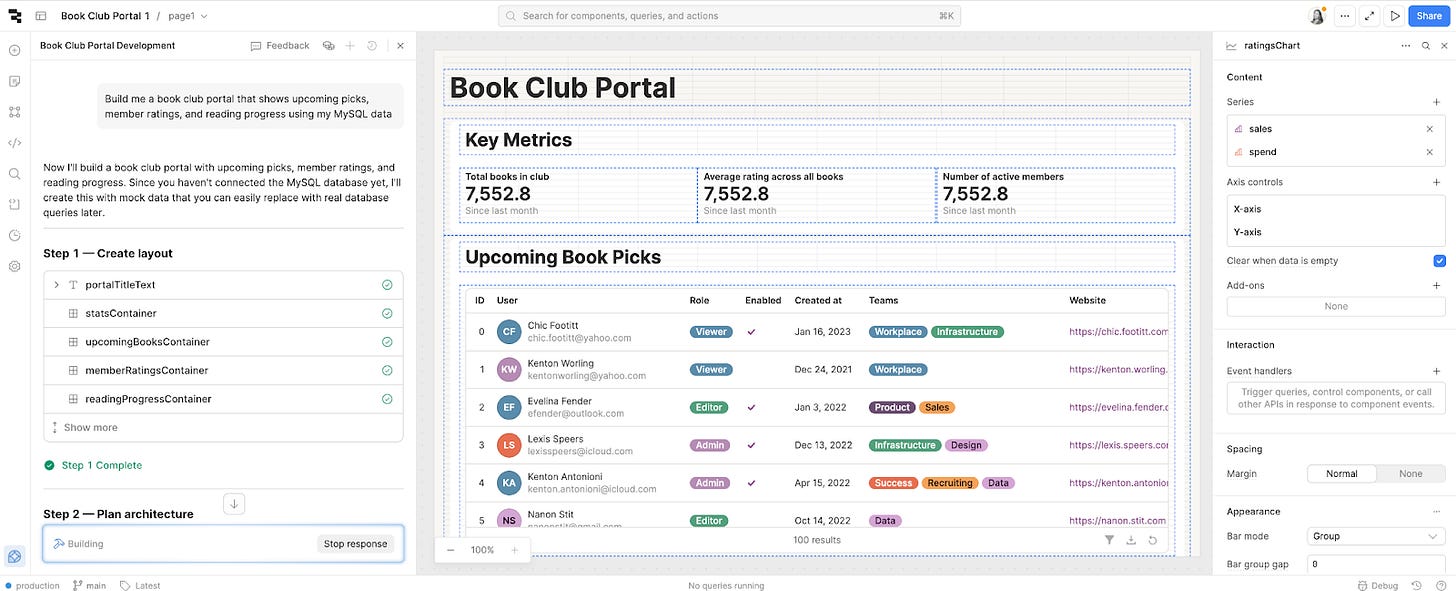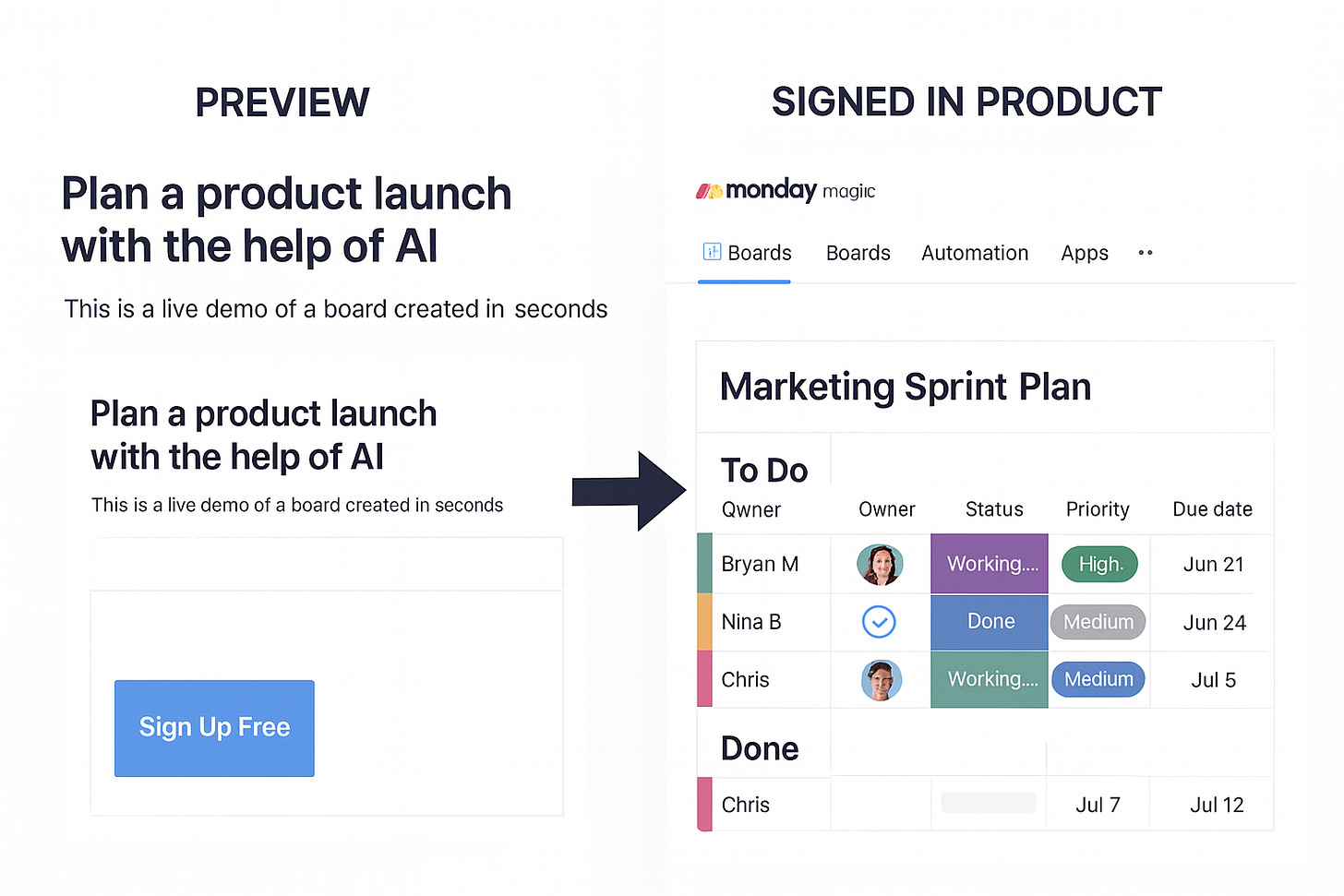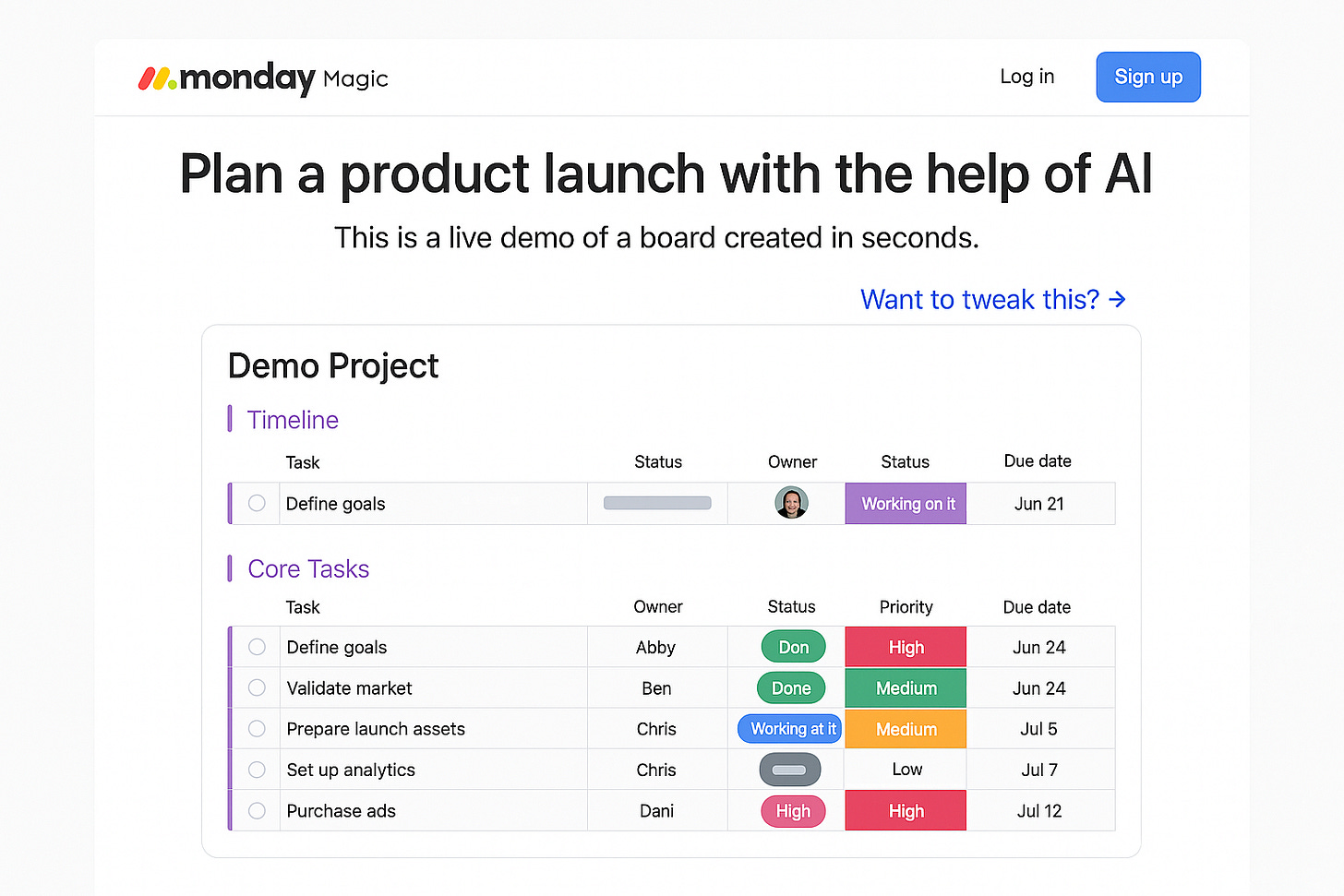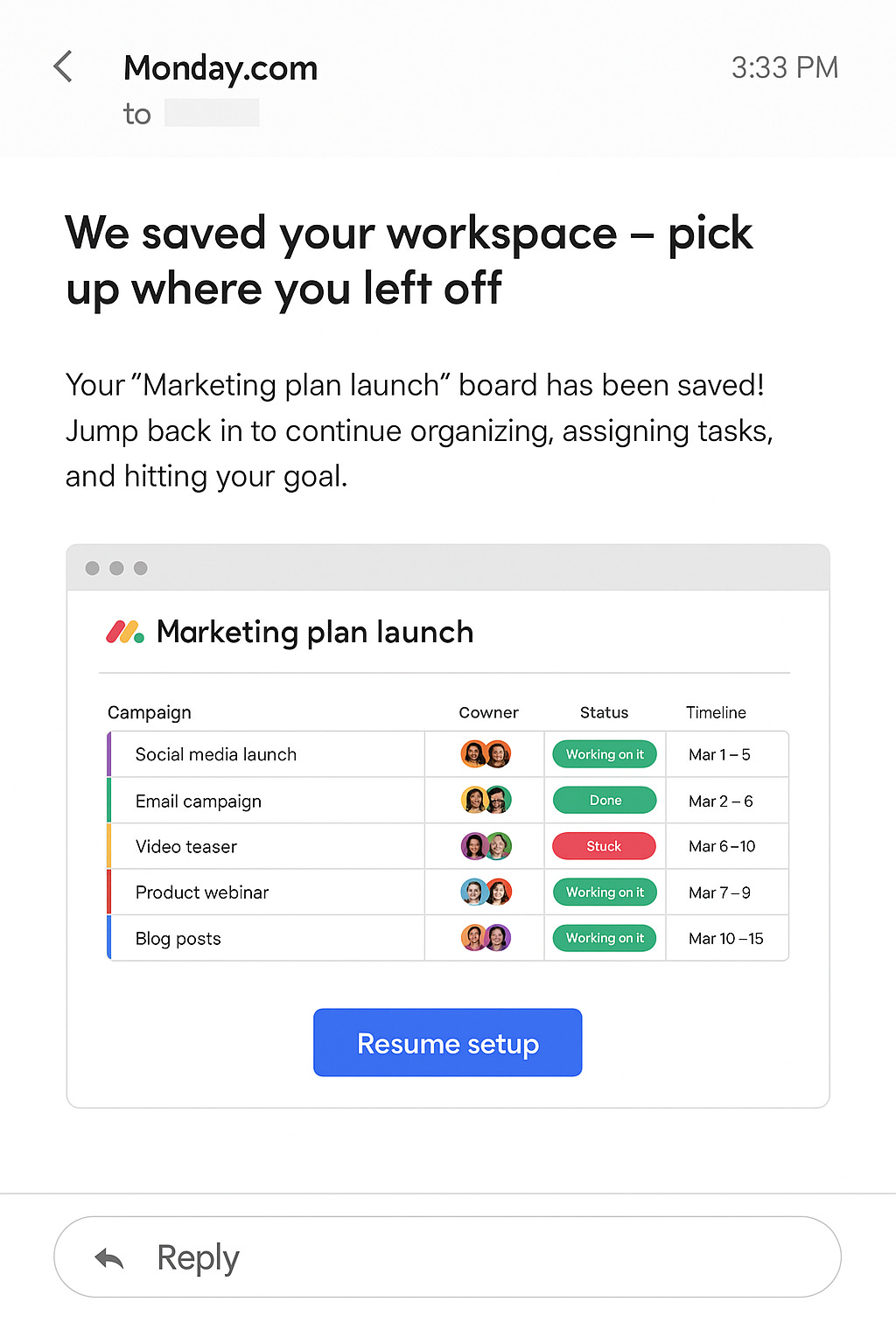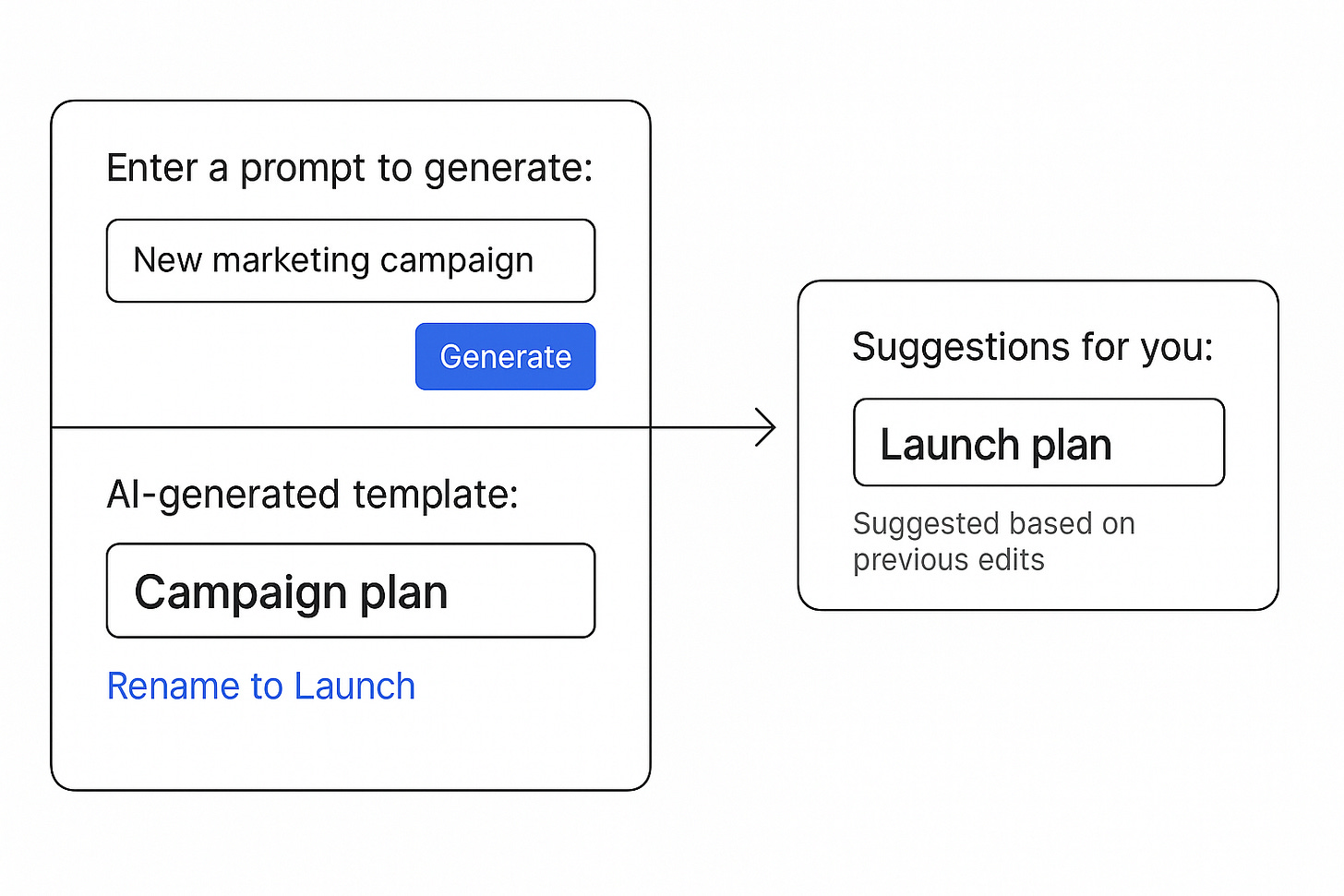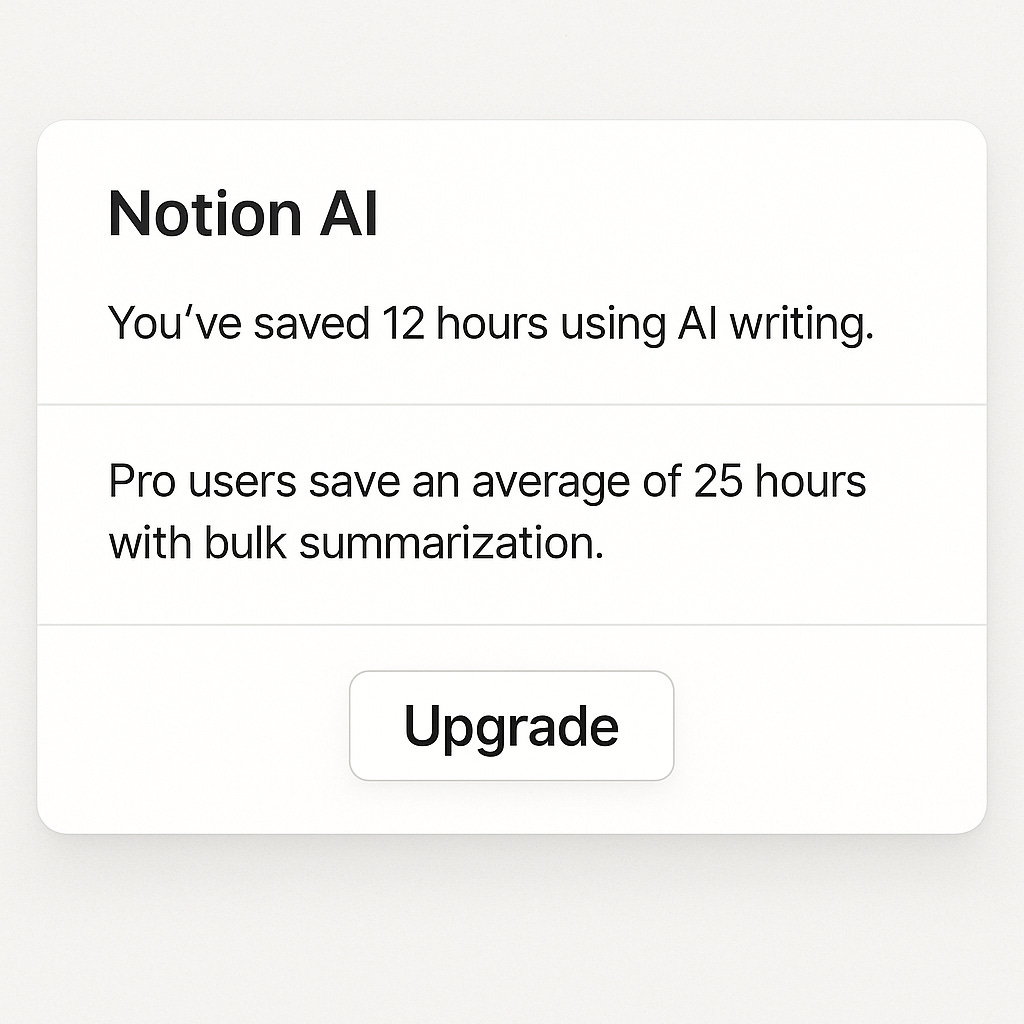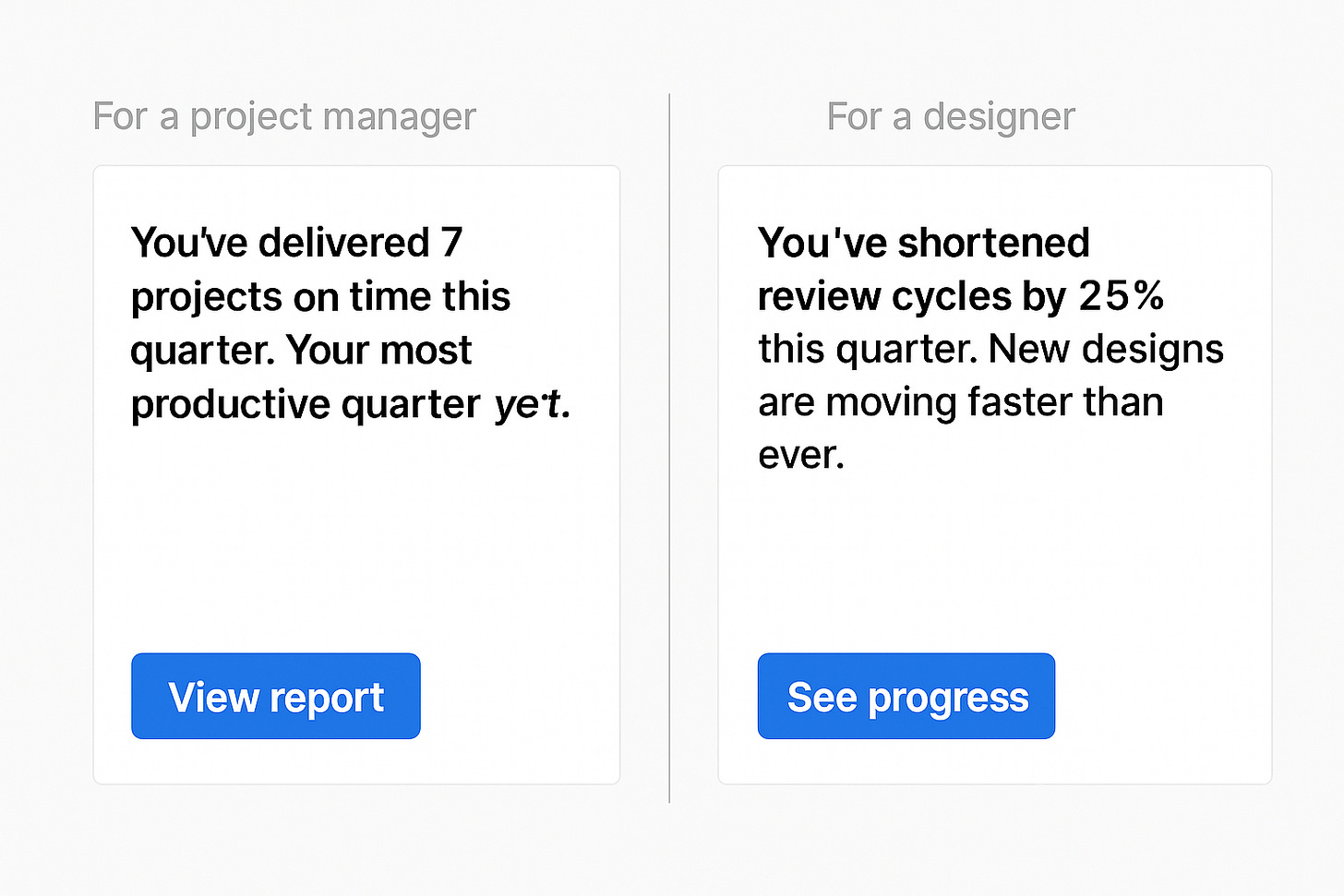AI × PLG: The 3 Patterns That Actually Move Activation and Revenue
AI tactics that collapse setup, surface ROI, and turn PLG into a continuous value loop.
👋 Hi, it’s Gaurav and Kunal, and welcome to the Insider Growth Group newsletter, our bi-weekly deep dive into the hidden playbooks behind tech’s fastest-growing companies.
Our mission is simple: We help you create a roadmap that boosts your key metrics, whether you're launching a product from scratch or scaling an existing one.
What We Stand For
Actionable Insights: Our content is a no-fluff, practical blueprint you can implement today, featuring real-world examples of what works—and what doesn’t.
Vetted Expertise: We rely on insights from seasoned professionals who truly understand what it takes to scale a business.
Community Learning: Join our network of builders, sharers, and doers to exchange experiences, compare growth tactics, and level up together.
Introduction:
Everyone’s racing to add AI to their product. Few are using it to grow their product.
Over the past six months, we’ve studied dozens of AI launches from PLG teams at Notion, Monday.com, Retool, Figma, Linear, and Zapier.
What we’ve seen is AI is rewriting the rules of Product-Led Growth; not by creating new features, but by collapsing the time it takes to feel value.
What used to take hours – setup, configuration, and recreating a workflow – now happens in seconds.
You tell Monday.com what you’re working on, and it builds your first project.
You open Retool, and an app appears based on your role.
You sign into Jira, and your first sprint is populated with sample tasks.
The shifts we are seeing are:
Before, personalization improved conversion rates. Now it defines trust. Users judge whether a product gets them.
Before, onboarding was about guidance. Now it’s about momentum. Users expect the product to start working for them instantly.
Before, value was implied. Now users expect it to be proven within the product immediately.
AI has turned PLG from self-serve education into self-serve execution. However, some teams are missing the mark. They’re layering AI into PLG without grounding it in the fundamentals that made growth work in the first place: personalization, frictionless UX, and context that connects the acquisition channel to the in-product experience.
That’s what our research explores. We’re documenting what teams are launching, while studying how to push these AI experiences further by applying the same proven growth levers that built the first wave of PLG success.
Here are three trends redefining Product-Led Growth by dramatically shortening the time to first value and how teams can extend them to drive revenue even further.
Introducing Stephany Yong:
Stephany Yong is a Director of Product at Atlassian, where she leads PLG teams across Jira, Confluence, and Loom driving acquisition, cross-sell, and onboarding. She previously led e-commerce at Glossier and built marketing automation tools at Attentive. Earlier in her career at Facebook, she helped scale Instagram Stories and grew In-Stream Video Ads into a billion-dollar business.
Trend #1: Personalized Previews Before Signup
Problem:
Traditional PLG experiences still make users “earn” the right to see value. You click “Get Started,” fill a form, confirm your email, and land in a blank workspace. By then, 60–70% of visitors are gone.
The Shift:
AI is now powering personalized pre-signup previews that let users experience the product instantly, tailored to their intent or role. It’s the next evolution of the interactive demo: live, dynamic, and personalized in real time.
Examples
Monday.com’s “Monday Magic” builds a live project board the moment a visitor describes their goal (“Plan a product launch”).
Pre Prompt:
Post Prompt:
Retool lets visitors manipulate mock data and connect example APIs directly on its site. It removes cognitive friction by showing that “building internal tools” isn’t as hard as it sounds.
Pre Prompt:
Post Prompt:
Both use a “Mad Libs” / fill-in-the-blank approach that makes customization intuitive while hinting at the product’s range. You can edit the natural-language prompt, refine your use case, and instantly see changes on-screen. They’re circumventing the issue of “Writer’s Block” where a new customer doesn’t know what to prompt in a tool they haven’t used before.
When the customer wants to go deeper, then they gate the product on signing up for an account, thereby creating a higher intent user entering the funnel.
Why it works:
This experience gives users a micro-win before asking for commitment. When someone sees a tailored result that mirrors their workflow, they internalize: “This product already gets me.”
It also reframes signup as a continuation, not a hurdle. The transition to moving from the website and into the product happens when users want to save progress or invite teammates. However, the magic only works when the experience is both performant and persistent. If the website AI preview takes too long to load doesn’t carry into the post-signup, that can lead to disappointment for the user.
When you try Monday Magic, the experience starts off strong. You’re asked, “What do you want to manage?” If you type something like “Plan a product launch” or “Track marketing campaigns,” the AI instantly builds a sample project board right there on the page. It configures columns like To Do, In Progress, and Done, with example tasks, colors, and owners. It feels like your board, created in seconds, without having to sign up or set anything up.
However, there’s room for improvement when you land in product. Instead of landing on the board you created from the website, the user ends up in a generic workspace that doesn’t match what you previewed. When you navigate the product from their side nav, you can find what you had created on the website. It’s unclear if all users will know to click there though.
That small disconnect breaks the momentum. As a user, you go from “Wow, this tool already knows what I need” to “Wait, where did my project go?”
What teams often miss:
They stop personalization at the demo: They treat the signed-out preview as a website conversion play, and not a holistic part of the activation and onboarding funnel. The handoff between the web experience and the in-product state is critical.
They ignore acquisition intent: Previews are often disconnected from the top-of-funnel traffic that drives them. Few teams map prompts or templates to non-branded search terms like “agile sprint board” or “marketing roadmap,” missing easy personalization wins.
How to push it further:
Treat the preview as the first session, not a demo: Persist context from preview → signup → onboarding so the first thing a new user sees is the project they already started. For example, if they built a “marketing sprint plan” on the website, they should land on that same board inside the product, with light onboarding layered over it.
Pre-seed prompts from acquisition data: Use pre-signup data (e.g., referrer keywords or copy in ad creative) to pre-seed the AI prompt automatically on initial landing.
Extend the conversation post-signup: Layer a micro-loop: “Want to tweak this?” before signup. It turns curiosity into co-creation on a website, driving stronger intent signals that you action on in product onboarding.
Treat preview sessions as retargetable objects: Store the preview output and re-engage drop-offs via triggered emails or remarketing (“We saved your workspace - pick up where you left off”).
If you’ve gotten this far, you may be ready to navigate to the 🔥 section and check out our Playbook now.
Trend #2: Turning Onboarding into Instant Progress
Problem:
The expectation from users during an onboarding is to learn before they can do and that’s where nearly everyone drops off. A typical flow looks like this: users sign up, land in a blank workspace, and are told to “pick a template” or “follow a quick tour.” In most SaaS products, 60–80% of new users never create their first project, document, or workflow.
The issue isn’t that onboarding is confusing; it’s premature. Teams ask for configuration (naming, integrations, role setup) before showing value. Tutorials explain features that don’t mean anything yet to the user. Template pickers offer too many choices and not enough guidance. Users don’t churn because they can’t figure out your product, they churn because they never produce anything with it.
The Shift:
AI is collapsing the gap between sign-up and set-up. Instead of asking users to build from scratch, leading PLG teams are using AI to create a working first draft the moment intent is expressed. The goal isn’t to explain what the product does, it’s to prove it works in seconds.
Prior to AI, a new user signed up for a product like Zapier and landed in an empty workspace. They’d be greeted with a checklist or tutorial: “Connect your apps,” “Add a trigger,” “Choose a template.” Dozens of micro-decisions cause most users to never make it past the first configuration steps.
Examples Now:
Zapier Copilot is the clearest example. Type a sentence like “When a lead fills out a form, add to Airtable and notify Slack,” and it builds the automation instantly: connectors, logic, and triggers all pre-filled. Users can edit right away, but they never start from zero. It turns “show me what’s possible” into “this already works.”
Linear uses a similar approach with its AI issue assistant. When new users describe what their team is working on (“I’m setting up sprint planning for a design team”), Linear auto-creates an issue board, sprint cycles, and sample tasks in seconds.
Notion’s AI templates extend the same idea to documentation. Instead of dropping users into a blank page, Notion now prompts: “What do you want to create?” A user typing “project kickoff plan” gets an auto-generated doc with structure, sections, and placeholders already filled in.
Across these examples, the pattern is consistent: AI onboarding executes outcomes on a real use case, instead of just explaining what features do.
Why it works:
The first completed action is the strongest predictor of retention. AI’s role is to make that action happen automatically.
The key is that the first generated output acts as a trust contract. If it’s relevant, editable, and fast, users keep going. If it’s generic, wrong, or slow, trust collapses and churn accelerates. This is why Replit and Linear constrain what their AI creates: not every possibility, just the most contextually relevant one. It’s easier for users to refine something specific than to invent something broad.
What teams often miss:
Over-indexing on generative setup without checkout output quality: Rather than making onboarding “feel magical,” focus on making the results useful. When the first draft feels generic, users assume the AI doesn’t understand their intent.
Example: A user types “marketing launch plan” into your AI onboarding and gets back a vague list of tasks (“Plan campaign,” “Post on social,” “Send emails”). Compare that to Linear, which pre-fills sprint tasks and cycles tailored to a “design team launch,” with due dates and owners.
Treating AI as a replacement for UX scaffolding instead of enhancing it: Users still need a clear next action after the initial generation. Nothing can replace a simple, opinionated UI upon initial landing, not even AI.
Example: Notion AI gets this right by adding contextual prompts like “Add your teammates” or “Set a project deadline” right after generation.
How to push it further:
Build an adaptive loop from user edits: As users edit the AI-generated setup, capture those edits as structured data to improve suggestions for their next best action. If 70% of users rename “Campaign” to “Launch,” you should start suggesting “Launch plan” templates by default.
Personalize “next best actions” in onboarding based on what the AI built: For example, “Since you generated a launch plan, invite your design agency next.”
Trend #3: Proving ROI Inside the Product
Problem:
ROI tracking used to be a key enterprise software feature set: dashboards, quarterly reports, and value realization slides built for exec reviews.
As AI floods into everyday tools, everyone is building productivity features. For the first time, the ROI is clear enough to show users directly.
Most PLG companies still measure usage: logins, session counts, and documents created.
However, we’ll start to see a switch to measuring impact – time saved or higher work output. Speed has become the new currency of value: how quickly users can move from an idea to output, from draft to done. Without quantifying the value of paid features, it’s hard for customers to rationalize pricing and renewals.
The Shift:
Before, productivity tools had to imply ROI through usage: “You completed 10 projects,” “You collaborated with 5 teammates.” Now, they can prove it by quantifying time saved, steps automated, and friction removed, while surfacing that data right where users work.
Examples:
Notion AI tells you exactly how much time it’s saved you in a week (“4.5 hours saved using AI writing and summarization”). Those metrics live inside the workspace helping turn efficiency into visible proof of progress for every user, not just admins.
Figma and FigJam summaries show how many teammates contributed, how quickly feedback loops closed, and how AI-assisted brainstorming sessions shortened design cycles.
Across leading PLG products, this pattern is spreading fast to drive wins on retention and increasing the upsell rate.
Why it works:
Visible ROI drives two things every PLG company needs: retention and expansion. Users who see clear value renew instinctively, and teams that can quantify that value are far more likely to upgrade.
What teams often miss:
Not tying ROI back to paid value: Many products showcase “time saved” without linking it to why the premium tier exists. If your free AI feature saves 2 hours, tell users how the Pro version saves 10. Visible ROI should ladder directly into your pricing story.
Treating ROI as a one-time reveal, not a continuous story: Most products show “value” once at the end of a project or billing cycle. But users need reinforcement in-session and across time. ROI should build like a narrative: “You saved 2 hours this week,” → “10 hours this month,” → “20% faster quarter-over-quarter.” Without that continuity, users forget the gains as quickly as they appear.
Pushing it further
Tie ROI to upsell messaging: Don’t stop at showing value, connect it to what more they could unlock.
Example: Notion AI could follow up with: “You’ve saved 12 hours using AI writing. Pro users save an average of 25 hours with bulk summarization.” It reframes upselling from cost to compounding benefit.
Localize ROI by role or team context.
Example: A designer on Figma cares about shortening review cycles, while a manager cares about projects delivered on time. Tailor the phrasing and timing of ROI nudges based on persona metadata, not a single template.
The Bigger Picture:
AI is rewriting the entire PLG funnel compressing acquisition, activation, and retention into a single, continuous feedback loop.
Here’s how the shift plays out:
Frictionless First Looks shorten acquisition. Instead of telling users what your product can do, you show them. A personalized preview replaces website marketing copy with a live, interactive demo of the product immediately, no account required.
AI That Executes accelerates activation. The first moment in-product shouldn’t be a tutorial, it should be a working draft. AI collapses the “getting started” gap by doing the first task for the user.
AI-Driven Value Visibility strengthens retention and expansion. When users see their results –hours saved, faster delivery, better collaboration – they stop needing to be convinced to renew or upgrade. Visible ROI is the new upsell.
The future of PLG isn’t about helping users do more. It’s about helping them do less, sooner and see more, faster.
🔥 Insider Growth Playbook: Rapid Time to First Value Realization
Most teams optimize signup flows or activation checklists. Few measure how long it actually takes a new user to experience a moment of visible progress. This playbook helps you find, instrument, and shorten that moment using AI or automation.
Step 1: Identify the First Moment of Proof
Look beyond your onboarding checklist. Ask:
“What’s the first thing a user could see that makes them believe this product works?”
Examples:
A designer previewing a generated mockup.
A project manager watching a populated sprint plan appear.
A marketer seeing an email campaign drafted in seconds.
That’s your first proof point.
Step 2: Measure Your Time-to-First-Value (TTFV)
Instrument the time between signup and that first visible proof.
Label it separately from Time-to-First-Action (TTFA).
Most teams find it’s 3–5× longer than expected.
Track:
% of users who reach first proof in <5 minutes
D7 retention for users who reached it vs. didn’t
Step 3: Remove or Automate One Setup Step
Ask: “What could the product do for the user before asking them to do it themselves?”
Then automate just that piece.
Auto-generate the first project, draft, or report.
Use AI to summarize the user’s input and show progress immediately.
Step 4: Turn the Moment of Value Into a Loop
Don’t just show users they’ve succeeded, use that proof to pull them forward. When someone reaches their first outcome, reinforce it and offer a logical next step.
Examples:
“You saved 18 minutes by automating the setup. Want to apply this automation to your next project?”
“This sprint plan was built 40% faster than average. Try adding teammates to accelerate delivery.”
Treat value moments as conversion triggers. Log who saw them, who clicked next, and how that affects activation or upsell rates.
Step 5: Reinforce Value Across Channels
The first proof of value should echo beyond the session. Use it to re-engage, retain, and upsell.
Examples:
In-product: Show progress streaks (“You’ve saved 9 hours this month”).
Email: Weekly summaries that celebrate outcomes, not activity (“You completed 3 projects 2× faster than average”).
Pricing flow: Remind users what they’ve gained (“Pro users automate 5× more workflows — that’s 15 hours/month saved”).
Visibility turns into habit; habit turns into renewals.
Tactical tip: Use the same data powering your ROI messaging to personalize upsells. “You’ve already unlocked X benefit; Pro multiplies it.”
Going through this exercise shouldn’t take months of analysis. Most teams can complete it in under two weeks and start seeing faster activation immediately after. By the end of that sprint, you’ll know exactly how long it takes a new user to experience value and how to cut that time down using AI and automation.
Want help on how to leverage AI within your existing PLG growth engine?
Let’s talk




